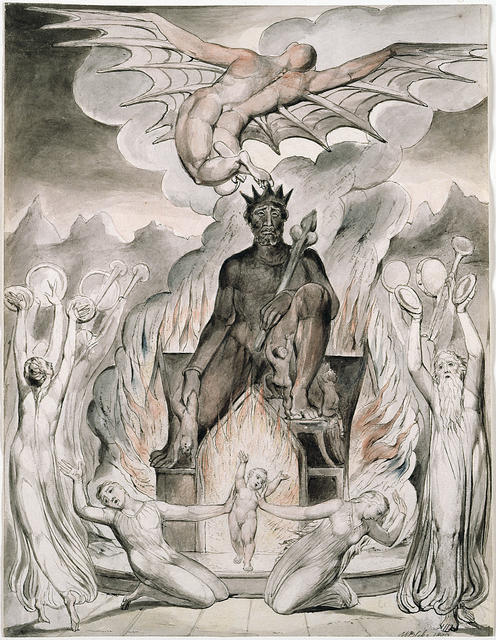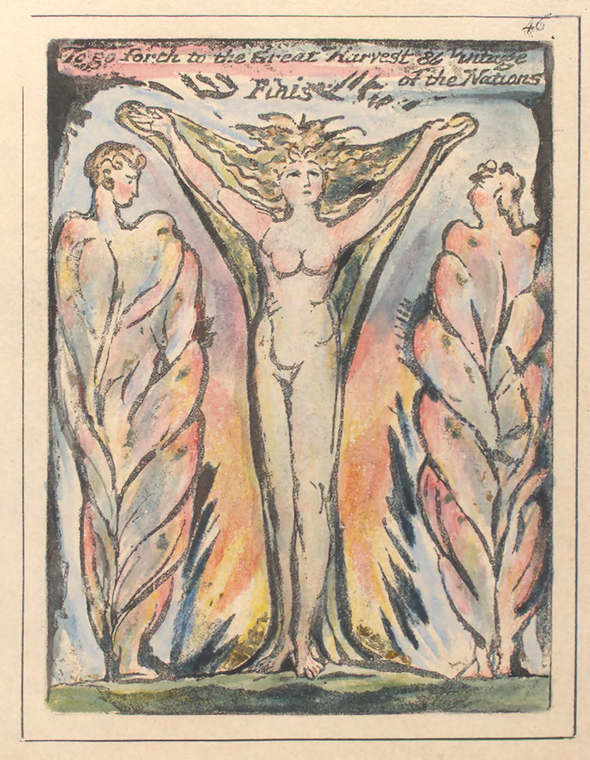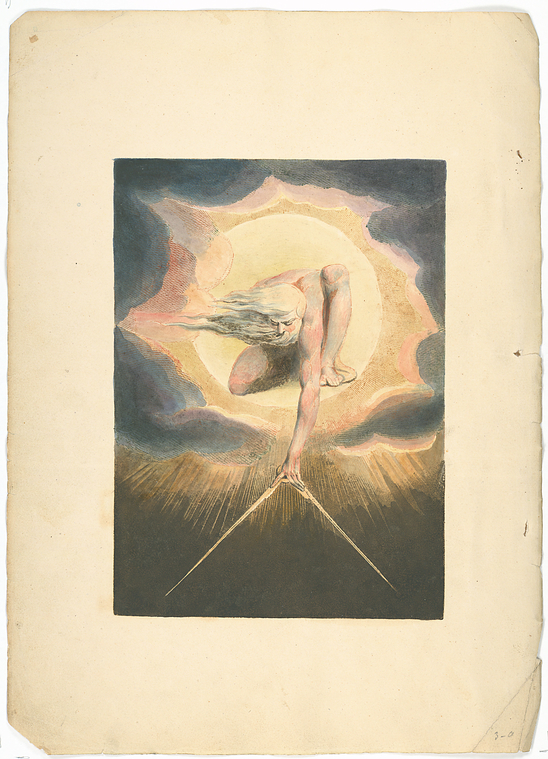 Repost from December 2009
Repost from December 2009Blake in his characteristic way, sees the birth of Christ as part of a larger picture. The Bible, John Milton, the history of religion, cosmology, and his own myth; each play a role in Blake's response to Jesus' birthday.
"On the Morning of Christ's Nativity"
The Blake Archive provides this in its introduction to "On the Morning of Christ's Nativity:"
"Blake's interest in the 'Nativity Ode' began some years before his execution of these water colors. His illuminated book, Europe a Prophecy (1794), clearly shows the influence of Milton's ode. By 1809, Blake may have taken a renewed interest in the poem because of his increasingly Christocentric theological views. His harsh criticism of classical civilization resonates with two of the 'Nativity' designs, 'The Old Dragon' and 'The Overthrow of Apollo and the Pagan Gods' (objects 3 and 4). Modern critics have been hard pressed to find Blake dissenting from Milton's own iconography and perspectives in the ode."
Milton, Nativity Ode
From Europe a Prohecy (E61,2.12):
"Ah! I am drown'd in shady woe, and visionary joy.
And who shall bind the infinite with an eternal band?
To compass it with swaddling bands? and who shall cherish it
With milk and honey?
I see it smile & I roll inward & my voice is past.
She ceast & rolld her shady clouds
Into the secret place.
PLATE 3
A PROPHECY
The deep of winter came;
What time the secret child,
Descended thro' the orient gates of the eternal day:
War ceas'd, & all the troops like shadows fled to their abodes."
.












